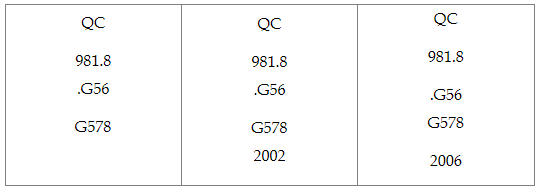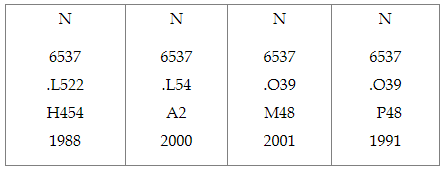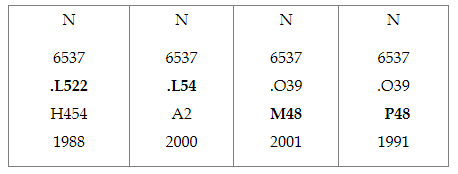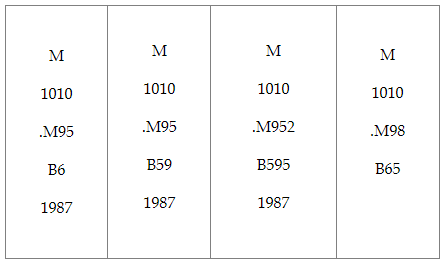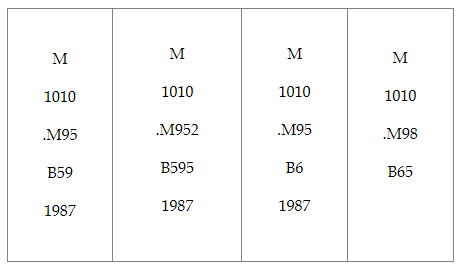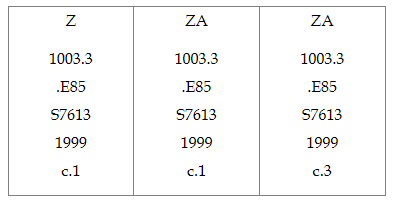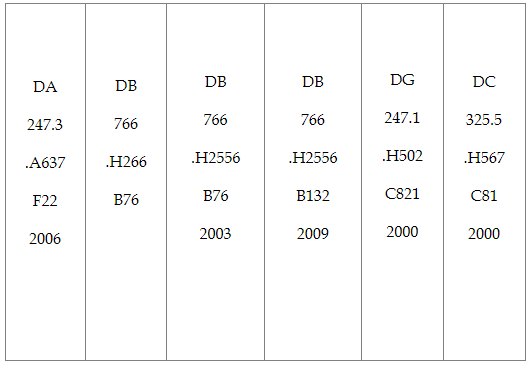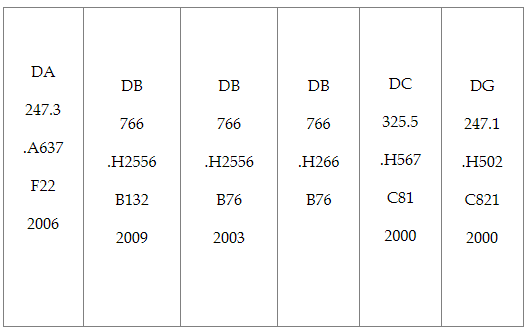A call number is like an address for a book. It tells you exactly where to go to find the book, or where the book should be returned. The call number is made up of letters, whole numbers, decimals, a publication date, and occasionally a volume and/or copy number. This allows for each book to have a specific location. One book's location cannot be confused with another book's location.
Here is an example of a book record from our catalog:

The call number is LA212 .R423 2005.
On the spine label of the book, it will look like this:
LA
212
.R423
2005
Alphanumeric Subject
The LC system uses the beginning letters and first line of numbers to indicate the subject of the book. In this example, "L" signifies Education. "A" signifies the subject subdivision History of Education, and the "212" specifies the United States.
As you might expect, the letters are ordered alphabetically. For example, the letter D comes before K, and so forth. Similarly, the letter L comes before LA, which comes before LB.
The numbers immediately following the first letter(s) are read as whole numbers. For example, 212 comes before 761 but after 115. Sometimes there are decimals in the first number. In these cases, the whole numbers are read as before, but the numbers following the decimal are read as decimals. For example, LA 212.63 comes before LA 212.7
How do we read decimals? How are they different from whole numbers?
For example, 212.16 comes before 212.5 because .16 is a smaller decimal number than .50. Similarly, 212.257836 comes before 212.3 because .257836 is a smaller decimal number than .3000000.
Cutter Numbers
The next part of the call number (.R423 in our example) is referred to as the Cutter number. It is called a Cutter number after Charles Ammi Cutter, who developed the Cutter Expansive Classification scheme in the late 19th century. This original system was later adapted by the Library of Congress. For more information, follow this link:
http://www.forbeslibrary.org/about/cacutter.shtml
Cutter numbers contain letters, which are ordered alphabetically and decimal numbers. So, for example, .R423 comes after .B76 and .R227, but before .R966 and .T381.
Some books have two Cutter numbers. They are both read as decimals, even though the second Cutter number does not contain a decimal (in order to distinguish the two numbers). An example of such a call number is below, with the Cutter numbers in bold:
ML
420
.S77
R33
2004
Date of Publication
The last number in the above example, 2004, is the date of publication. This is to be shelved in chronological order for the same book. For example, a 2004 second edition comes after the original 1978 publication but before the 2006 third edition.
Volume Numbers
Sometimes a call number will contain a volume number, labeled v.1, v.2, etc. These are shelved in whole numerical order within the set of books.
Copy Numbers
A call number will contain a copy number if there are multiple copies of the same book on the shelf, labeled c.1, c.2, etc. These are shelved in whole number order.
One thing to always keep in mind when shelving books and shelf reading is that nothing comes before something.
If a book contains no volume number, that book comes before a book within a set that does contain a volume number. If a book contains no date in the call number, that book comes before the same book that does have a date in the call number.



